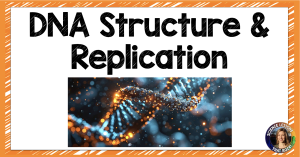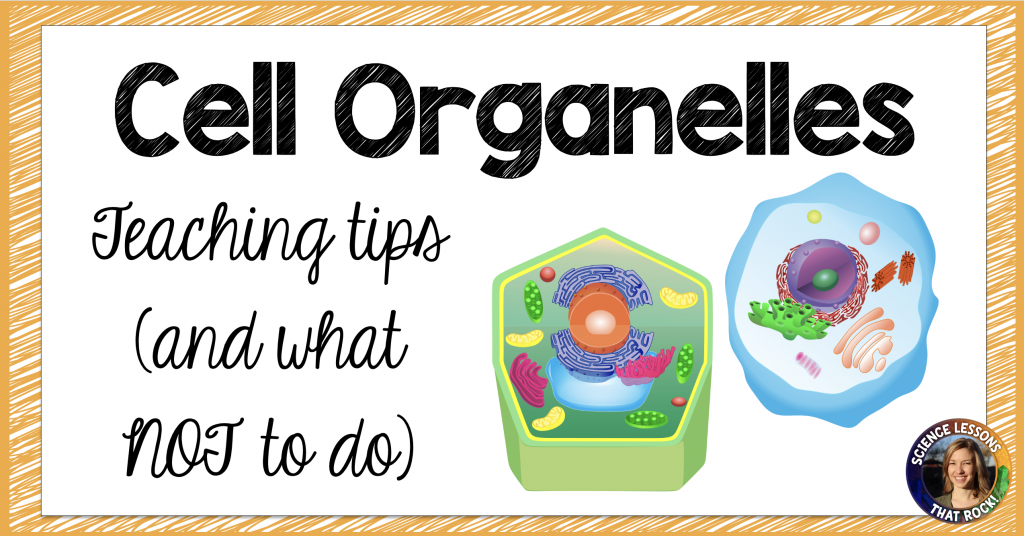
Hi teacher friend. I’ve been putting this blog post off for a long while…. cell organelles. Why? First off, this is not one of my favorite topics to teach. Yes, getting out the microscopes are a blast, but overall organelles are a really abstract topic for students. I’ve gone back and forth over the years having the internal battle of “what do students really need to know?” Should students be able to identify the parts of a cell on a diagram? Do I really care if 10 years from know they can point to a chloroplast on a diagram? Not really. But do I care if they understand that plant cells can take in light energy and convert it into chemical energy (which is then transferred to us?) Yes.
So here’s the purpose of this blog post: I’m going to explain to you what I do, and what I don’t do, and yes… I’ll admit to the not-so-great lessons and projects I did early in my career that I’ve since steered away from. I’ll explain the WHAT and the WHY and from there hopefully you can figure out what works for you and your students. Ok, let’s dive in!
Cell Organelle MUST DO’s
1. I think there are two main schools of thought when it comes to introducing organelles: 1) front-load them all at the beginning of the unit, or 2) wait to introduce organelles as you cover the cell processes they are involved in. I’ve tried both ways, and I’m sticking with option 1, but with a caveat: give students the basic function of each organelle, but don’t expect them to really understand anything until you teach it in context. ie: it might not be fair to quiz them on organelles until the END of the unit.
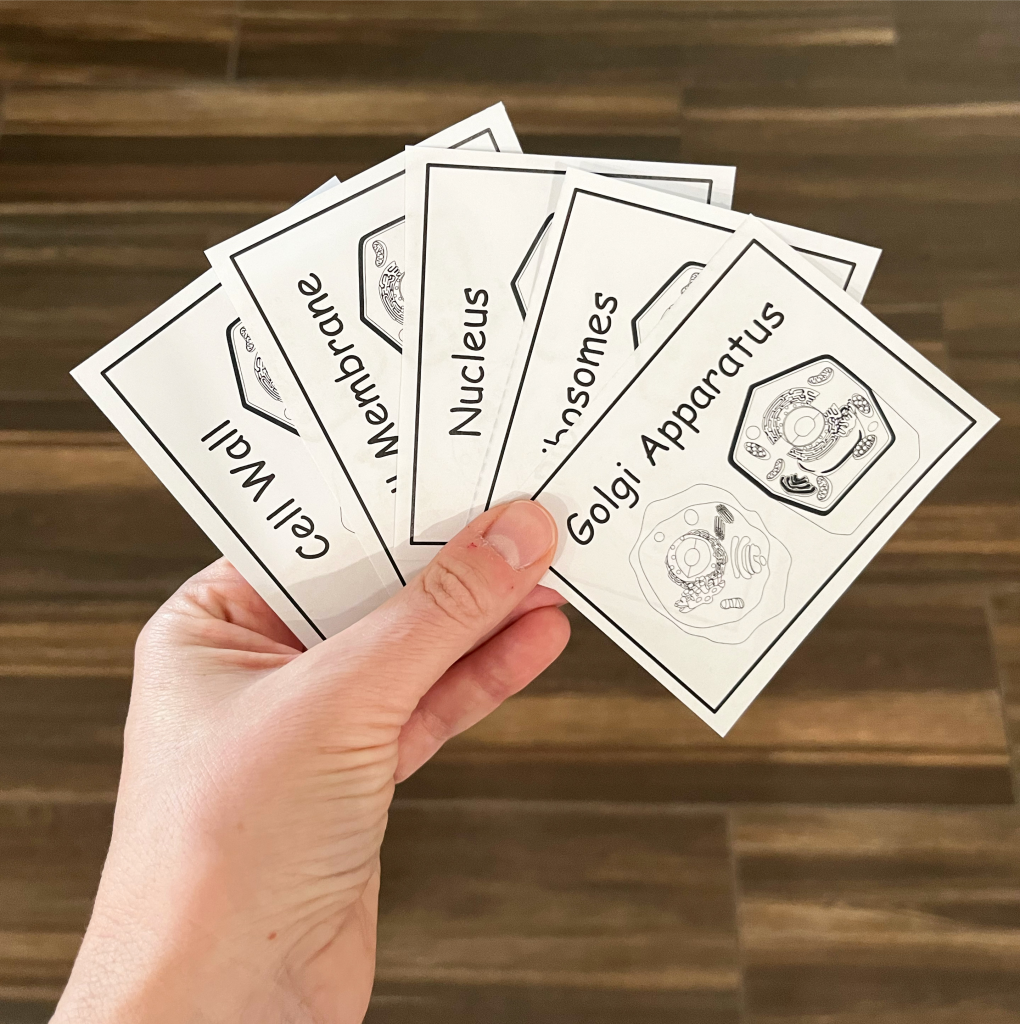
I have students make flashcards of each of the organelles and we talk about their job in general terms. They keep those flashcards for a long time (months!) so when we get to each new cell process we can go back to the flashcards and review their function. For example: at the beginning of the unit students should be able to tell me that the ribosome helps make proteins. When we get to protein synthesis, the flashcards come back out, we review the organelles involved, and dive in from there.
You can find the flashcards on my website or on TpT.
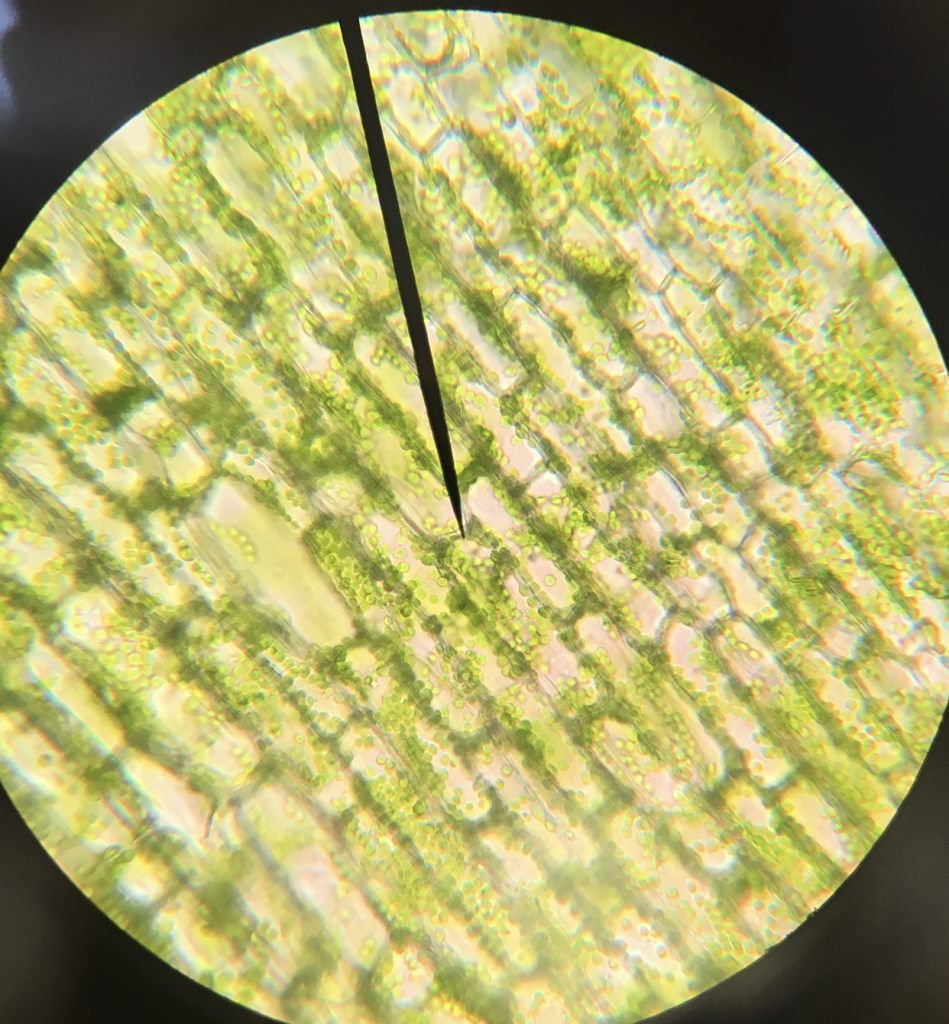
2. Once you’ve introduced organelles, it’s time to get out the microscopes. Have students look for organelles in different cell types, but don’t just stop there. What do they notice about the structure? What can we infer about the organelle based on it’s structure? For example, you could have them compare and contrast the cell wall and cell membrane based on their observations.
If you need suggestions on which specimens to observe, here is a list to get you started:
- Use purple onion skin to observe cell walls and cytoplasm
- Use elodea to observe chloroplasts (this is invasive in some areas, so dispose of properly)
- Use cheek cells (with stain) to observe the nucleus and cell membrane
- If you order a sample of protists, you can view cilia and flagella
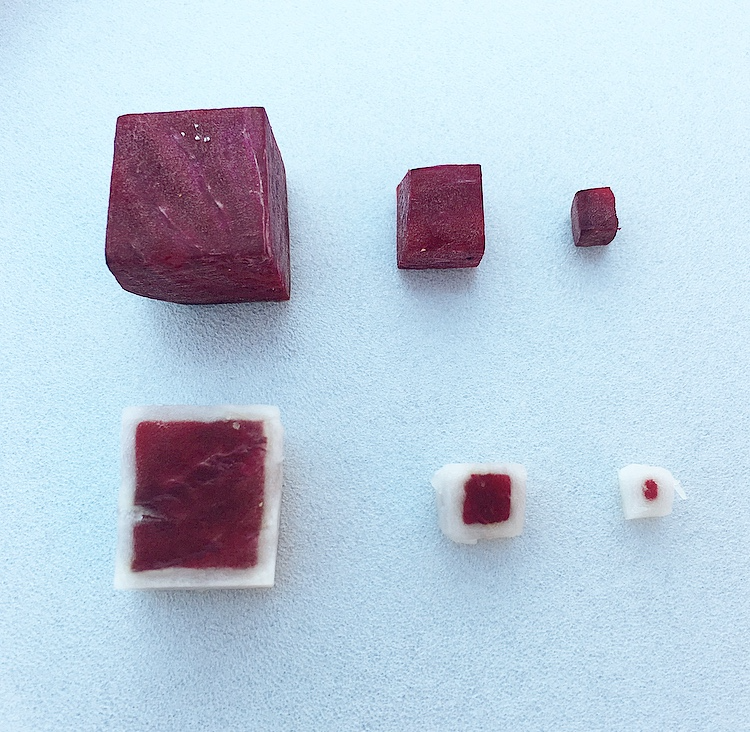
3. Spend a lot of time on membrane (not just the outer cell membrane, but the topic of membranes in general). Membranes are SO important- they are the site of most chemical reactions, and they receive signals via receptors. Before we talk about organelles, I have students do this cell size surface area to volume ratio lab. Then we relate that concept to organelles- why are so many organelles full of stacked membranes? What does this help them accomplish? Here is a lab you can use.
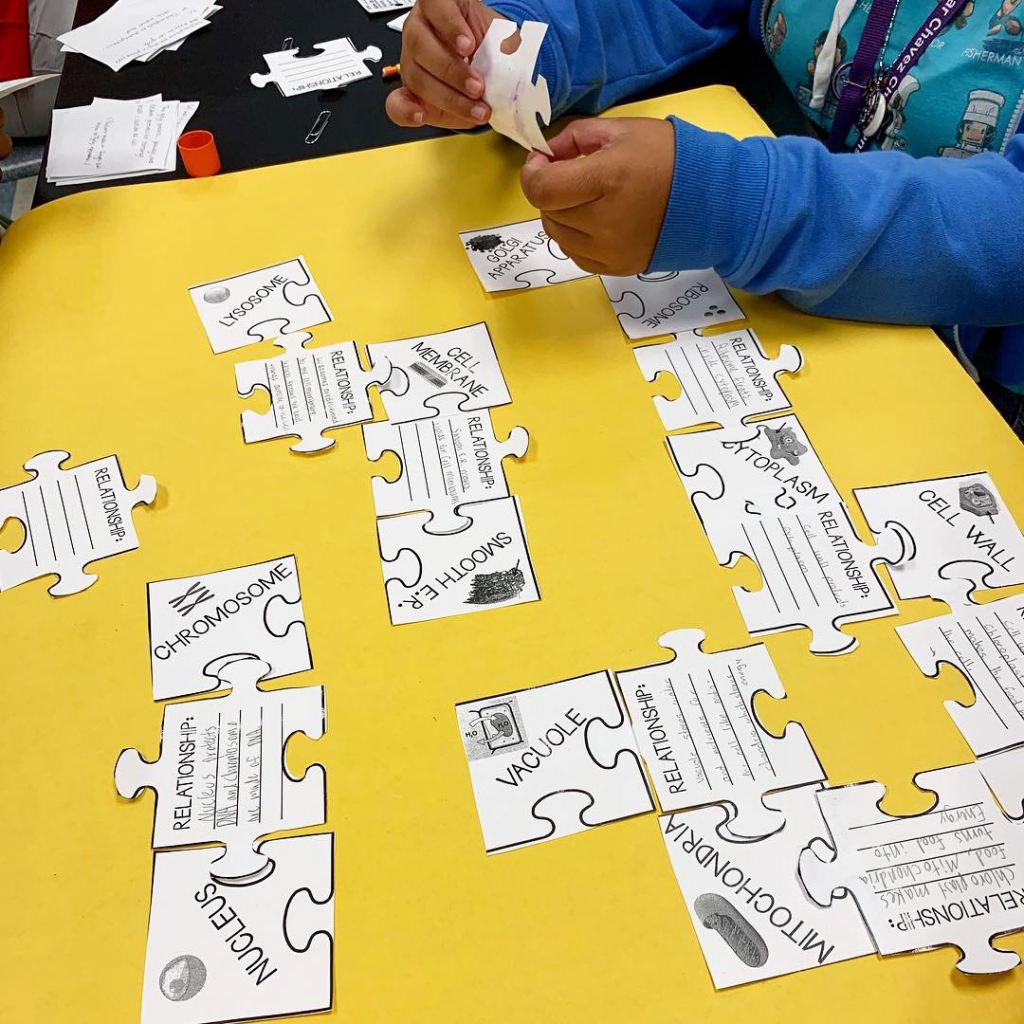
4. Focus on relationships between organelles. Memorizing what an organelle does stand-alone is the same as memorizing the parts of a car engine but not understanding how they work together. The mitochondria in a plant cell can’t do much if it doesn’t get chemical energy from the chloroplast.
I use this puzzle piece activity every year and it has GREATLY helped students understand how organelles work together. Students link together organelles and write down the relationship between the two. Check it out on my website or on TpT.
Cell Organelle DON’T DO’s

1. Please don’t hate me for this one. But I’m going to tell you to stop doing the edible cell project. Yes, once upon a time I did this, and I’m even including a picture as proof. Yes, it is fun to have licorice ER and skittle vesicles. But what do students really learn from this? Anything of value? If you can’t come up with an answer to that question (I couldn’t) then I’d say skip it.
2. It’s time to stop teaching students that the nucleus is the control center of the cell. Why? Because it’s not in charge. It “controls” nothing. The nucleus is super important, don’t get me wrong, but it isn’t in charge of cellular functions. It simply stores and protects all the information that is needed for the cell to do those processes. Here is a blog post with more details. Instead, focus on the cell membrane and why it is the most underrated organelle.
3. The past few years, I’ve stopped having students identify each organelle on a diagram. Because…. what’s the point? Like I said earlier, I don’t care if my students can point to a chloroplast on a diagram. Here’s what I DO think is important: structure and function. Make sure students understand how the structure of something helps it accomplish a job. For example- why is the chloroplast full of stacks of membranes? How does increasing the surface area to volume ratio help it during photosynthesis? That, my friend, requires critical thinking that labelling a diagram does not.
I hope now that I’ve explained the WHY behind what I do and don’t do, that you feel better informed to start your cells unit. Please email me if you have any questions or suggestions, I’m always open to them!
Rock on,




